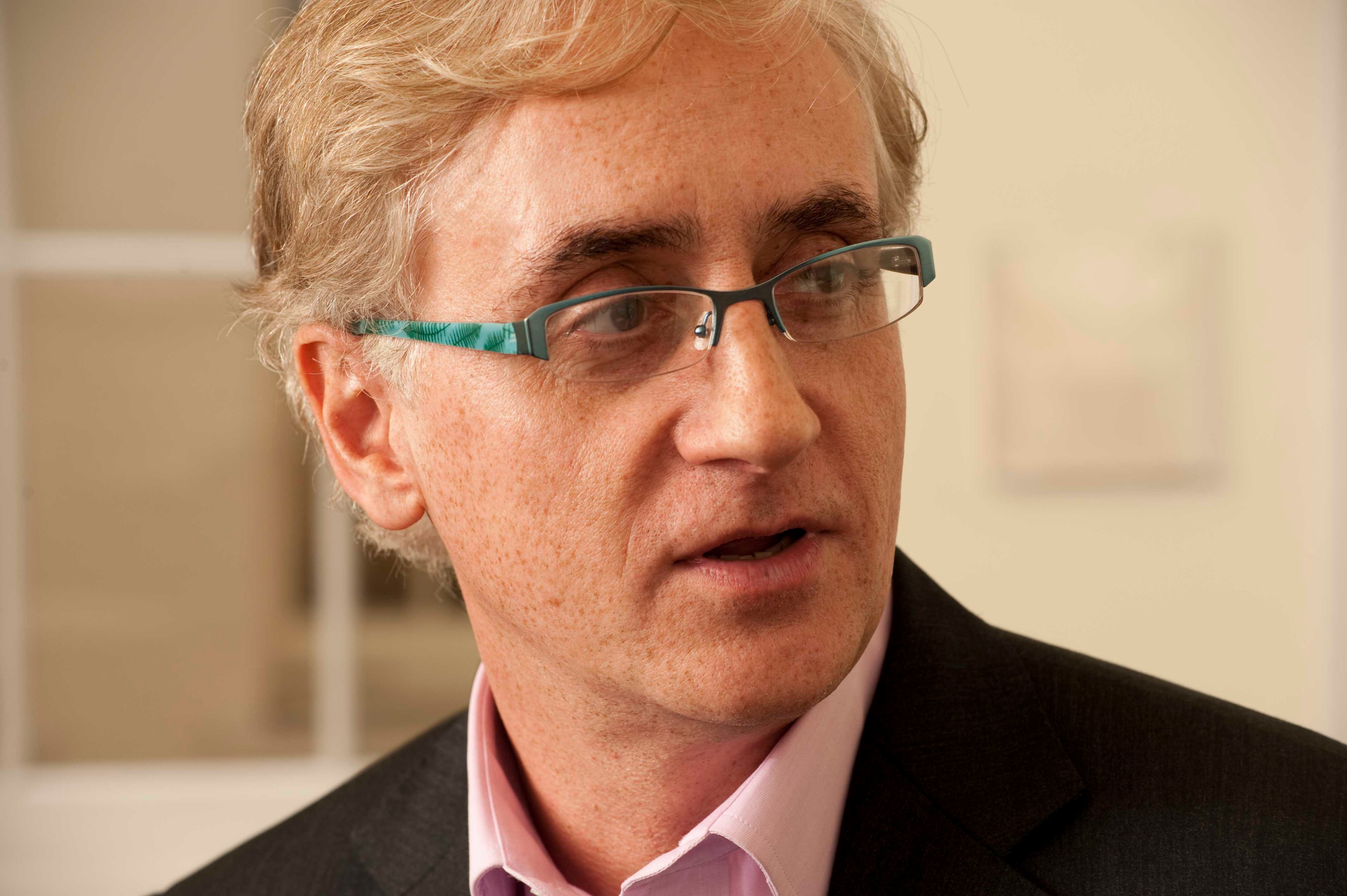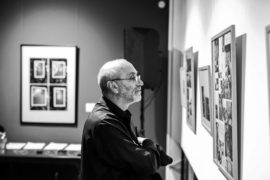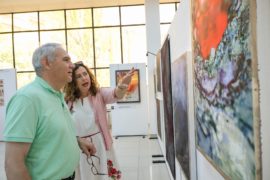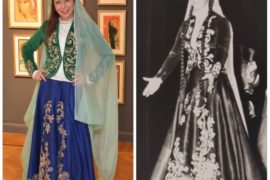At this year’s Armenia Art Fair, Dr Iain Robertson, head of Art Business Studies at Sotheby’s Institute of Art in London, will give a presentation about the art market. Having just published a book titled New Art, New Markets, he will discuss the ideological and cultural shift away from a global Western cultural consensus towards a multitude of new approaches. Armenia Art Fair met with Dr Iain Robertson to learn a little about him, his thoughts on international art fairs, and what he’s looking forward to seeing in Armenia.

AAF: Can you tell us about your background?
Iain Robertson: I started out after completing an art history degree and then moved on to do an arts management degree. I then, to cut a long story short, organised exhibitions at the RIBA (Royal Institute of British Architects), and then I took the Foreign Office examinations and miraculously passed that particular hurdle. I went to China and Taiwan and worked as a British attaché to the embassy, firstly to Taiwan and then briefly between China and Taiwan. And, while I was there, I jumped ship relatively quickly, and joined the Taiwan Foundation and the Museum of Taiwan. From that point onwards, after having learnt Chinese, I came back to the UK, joined City University and taught Arts Management, then Sotheby’s got in touch with me in 2004.
Why do you think art fairs are popping up everywhere?
There is an enormous amount of demand. It’s a kind of currency now. People are collecting these things in lieu of other things. There are so many products out there at the moment, most of them multiples, so people are looking for something distinctive, unique and bespoke. Everyone’s looking for the unique handmade item, whether it’s a handbag or a bespoke car or a suit. I think quite frankly, that art is at the top of that pyramid. It’s a social status, and also there’s an enormous amount of liquid cash around at the moment, more than at any time in world history.
What do you think about the Caucasus region?
It is one of those super emerging markets where there is money. There’s a will. I think on a geo-political note, the One Belt, One Road project of Xi Jinping, will start to bring in enormous amounts of wealth into that region. Combined with the resurgence of Tehran and Iran, which is bound to happen when the sanctions are lowered, and then again you can look at Turkey. So you’ve got three potentially enormously lucrative economies pumping wealth and lending money for infrastructure projects, and the area will blossom. It’s the foundation of all civilisation. The Aral Sea, it’s where everything came from, along that Silk Road. You seem to tick all the boxes. You have affinities with China; you have affinities with the North (Russia), and indeed with the Islamic World as well, and in your case the Orthodox world too. So, there are so many historic and current potential relationships.
What are you most excited about seeing in Armenia?
Probably the Armenian churches. You are the first Christian state, of course the glorious landscapes too, but it is essentially the Christian architecture.

And what about your new book New Art, New Markets, can you tell us about it?
The book divides the world into the empires that existed before organisation. Before the Europeans carved up the world, there were ancient civilisations which I have named as China, Hindustan (India), Aryana (Iran) and Hispania, which cover vast territories, which have in modern times, unhelpfully been sliced up into nation states. So I’ve divided the book up into these huge cultural civilisations and tried to draw some sort of economic parallel with today. And there’s no doubt that China, specifically China, is looking at its past and getting much more inspiration from what happened before than what was given to it later by the West, and adopted from the West. So is modernization under threat? Is westernization under threat? I think it is. Is globalization under threat? Maybe a new globalization will emerge out of these civilisations. So that’s the exciting prospect.
And what do you think emerging art markets like Armenia, that are quite new, can do to exert their influence?
I think you need to form groups. Because Armenia’s quite a small state, it needs to align with other countries with similar trajectories. I think it needs to cash that particular way because alone, and as a small state, it’s very difficult. You need to act as part of a greater whole. You need to find strategic relationships, it’s absolutely key. It doesn’t have to be with your neighbors, but it usually is. In your case you can look further afield too. I mean there is a diaspora as well, and the diaspora can be very useful for you actually, as it was for the Indian market in the 1990s. I mean the Iranian art market has been driven for ages by the diaspora because at home it’s very problematic, and India as well.
There is a very clear Russian influence on Armenia, do you think it will have any impact…
Yes, I think it will. The one thing that the soviets exported was oil painting. They exported it to China and there is a big market for oil painting in China as a result of that. And I think that also has got to have an impact in terms of technique, artists training and also visual perception. Large history paintings, figures, I’m sure without knowing much that forms a big part of the market in terms of price, and that will go up in value. And in fact your audience, funnily enough, your buying audience may well be in Asia, if it’s good enough technically. There’s an example of Chinese collectors buying Russian soviet art, and actually rescuing the Russian soviet art market. So this could easily be a place to promote the work. All roads lead to Asia.
Dr Iain Robertson’s lecture will take place at 6pm on 1st June at National Gallery, 1 Aram Street, Yerevan, Armenia
His new book New Art, New Markets is published by Lund Humphries




